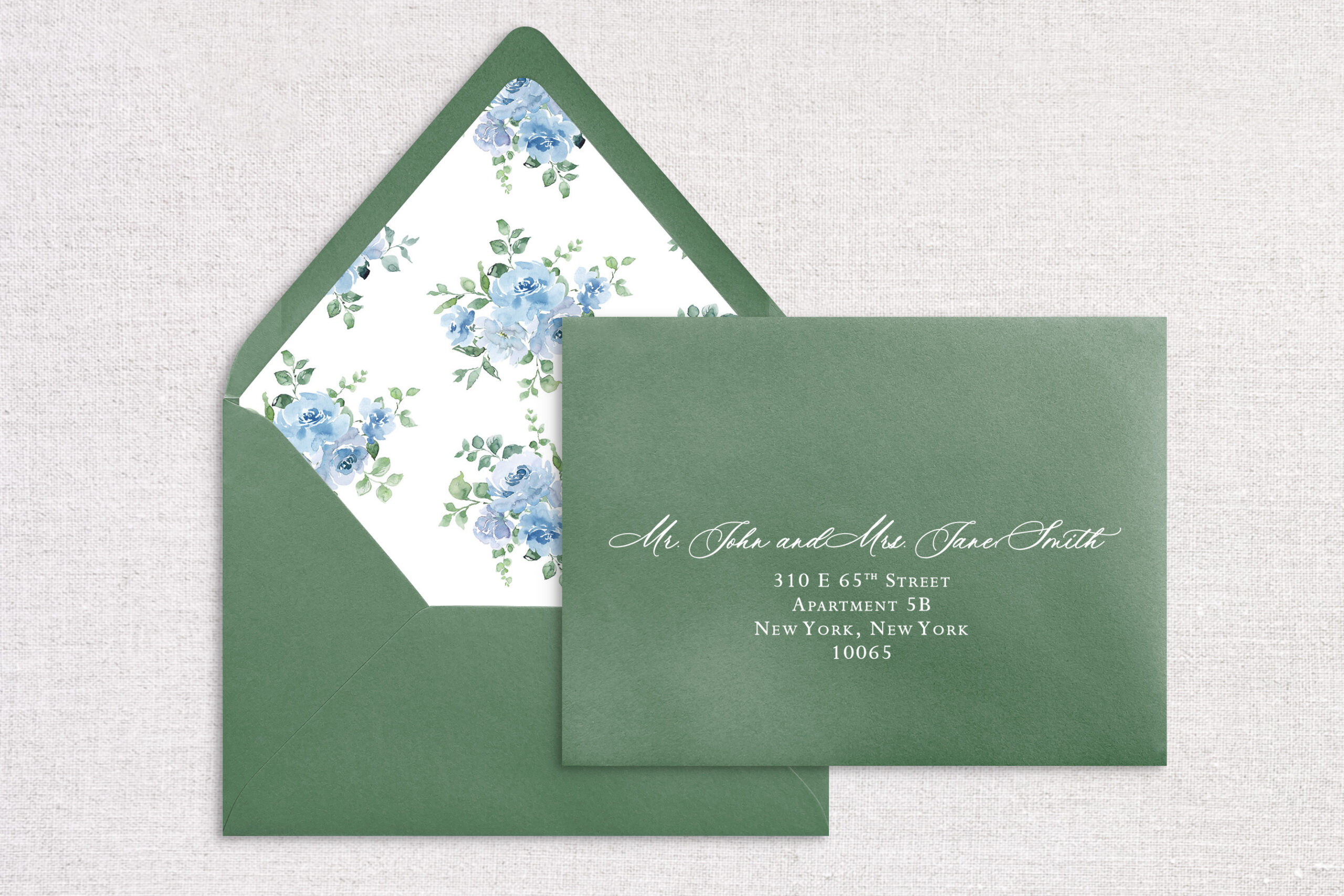Addressing wedding invitations is one of those wedding planning tasks that requires extra care and a keen eye for detail. It’s not just about ensuring your invites reach the right people; it’s also about respecting the preferences and identities of your guests. So, whether you’re dealing with traditional, non-traditional, LGBTQ+ couples, or a variety of family scenarios, here’s a guide to help you navigate this tricky task.
Keep your addresses organized by grabbing the addressing spreadsheet from Tinlizzy Design Co.. Just remember to go to File > Make a copy to start typing away!
Married Couples
Traditionally, when addressing wedding invitations for heterosexual married couples, address to both partners, with the husband’s name listed first. For example:
- Mr. and Mrs. John Smith or
- Mr. John and Mrs. Jane Smith
For same-sex couples, the same rules apply. If the couple is married, their names can be on the same line:
- Mr. John Adams and Mr. John Brown
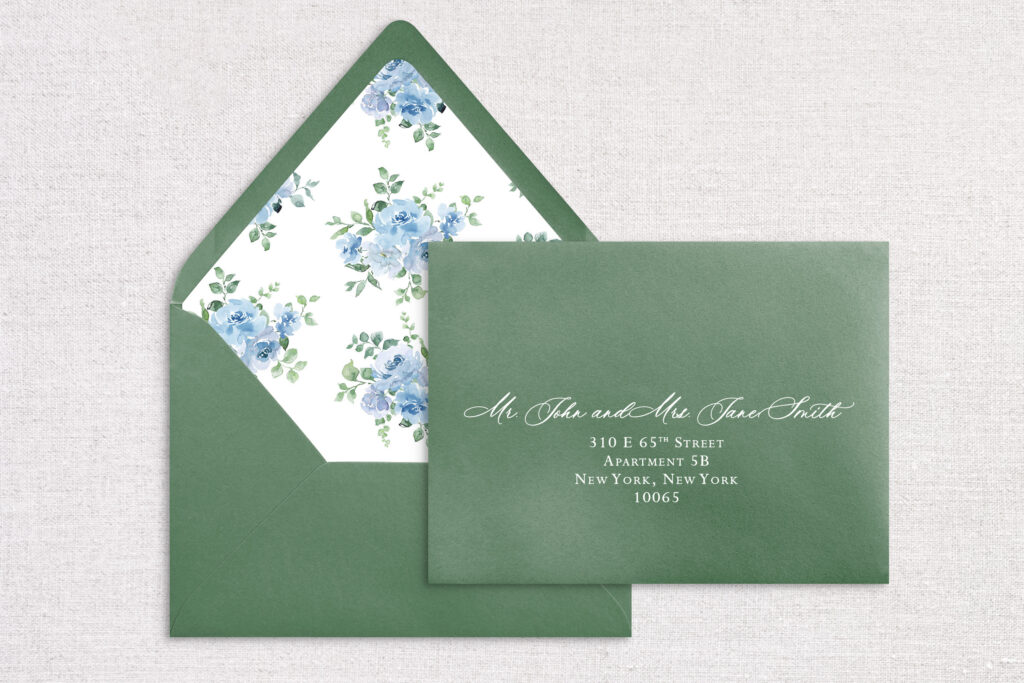
Unmarried Couples Living Together
For couples who live together but are not married, include both names on separate lines in alphabetical order:
- Ms. Jane Adams
Mr. John Brown
For same-sex couples, if they are not married, their names should be on separate lines in alphabetical order:
- Ms. Jane Adams
Ms. Julie Brown
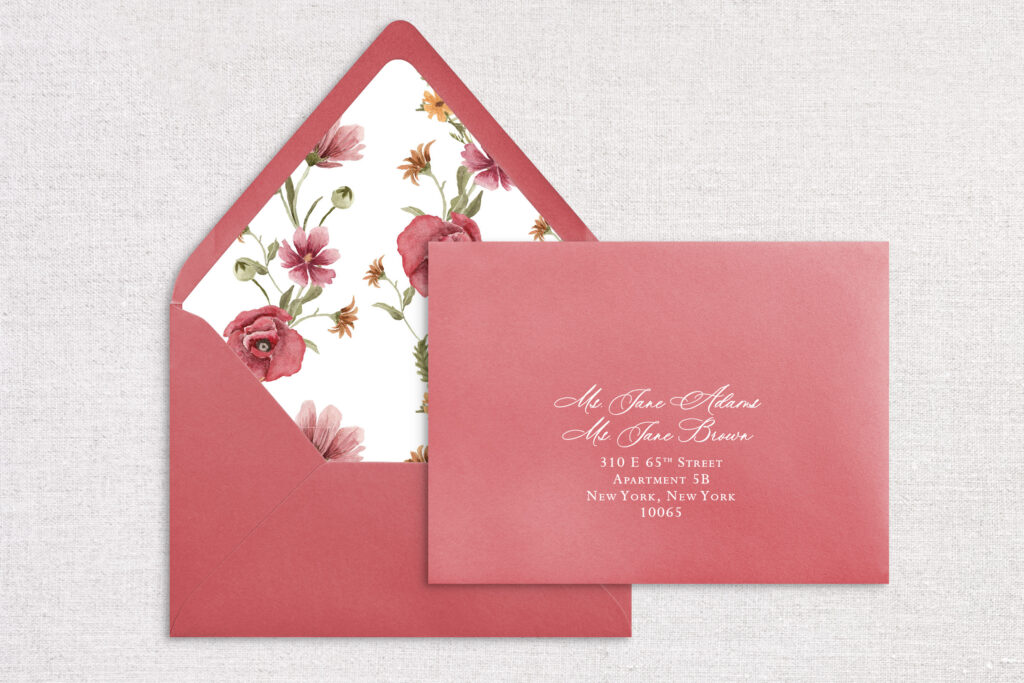
Doctors, Judges, Military Officers, etc.
Many people choose to use professional and military titles when addressing wedding invitations out of respect for the individuals’ achievements and roles. Here’s details to help you navigate this area:
Professional Titles:
- Doctors: For individuals that hold a Doctorate in any field (MD, PhD, EdD, etc.), the title “Dr.” should be used, and it should be spelled out as “Doctor” only when the invitation is exceedingly formal:
- Doctor Jane Smith and Mr. John SmithDr. Jane Smith and Mr. John Smith
- The Doctors Smith
- Drs. Jane and John Smith
- Religious Leaders: Titles such as “Reverend” or “Rabbi” are fully spelled out. If the individual is married, their spouse’s name should follow:
- The Reverend Jane Smith and Mr. John Smith
- Rabbi Jane Smith and Mr. John Smith
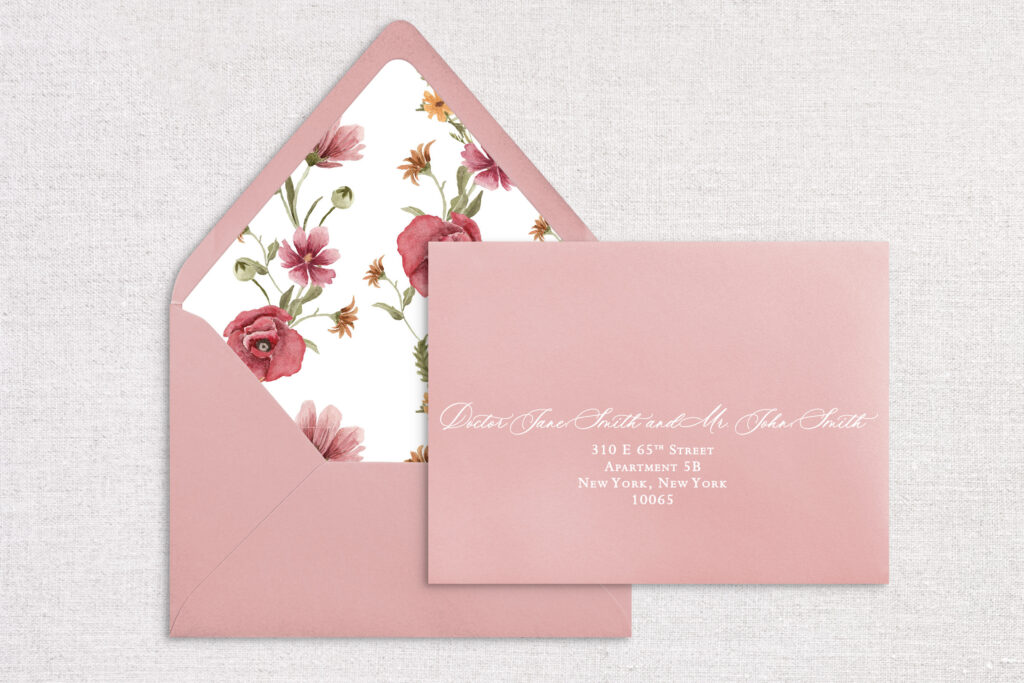
Professional Titles:
In the military, rank and branch of service can be important to acknowledge. Here are some examples:
- Active Duty: For officers at the rank of Captain or Colonel and above, their rank should be spelled out, followed by their full name.
- Captain Jane Smith
- Sergeant John Smith
- Retired Military: For retired military personnel, the word “Retired” should be included. The full rank is spelled out, with their name following:
- Captain Jane Smith, Retired
Again, these are guidelines and should be adapted to your personal preference and the formality of your wedding. If you’re ever unsure of how to address someone with a professional or military title, it’s always a good idea to reach out and ask for their preference.
Families With Children
Addressing wedding invitations with children on them can be a little tricky as different rules apply based on age and gender. Here are some traditional titles and when to use them:
1. Miss: Traditionally, “Miss” is used for girls under 18. Once they reach 18, they can be addressed as “Ms.” So if you are inviting a family with a daughter named Jessica who is 15, you would write:
- Mr. and Mrs. John Smith
Miss Jessica Smith
2. Master: The title “Master” is an old-fashioned way of addressing boys who are under the age of 12. This term is less commonly used today, but some may choose to use it in more formal situations. So if you have a 10-year-old boy named Peter in the family you’re inviting, it would look like:
- Mr. and Mrs. John Smith
Master Peter Smith
3. No Title: For teenage boys (13 and over) and up to 18, typically no title is used. Address them by their first and last name following their parents’ names:
- Mr. and Mrs. John Smith
Peter Smith
4. Mr.: Once a young man turns 18, the title “Mr.” can be used following their parents’ names:
- Mr. and Mrs. John Smith
Mr. Peter Smith
It’s worth noting that these rules mostly apply for formal or traditional wedding invitations. For less formal invitations, or if you prefer a more modern approach, it’s perfectly fine to include children on the invitation without a title, or to list the entire family on one line:
- The Smith Family
- John, Jane, Peter, and Jessica Smith
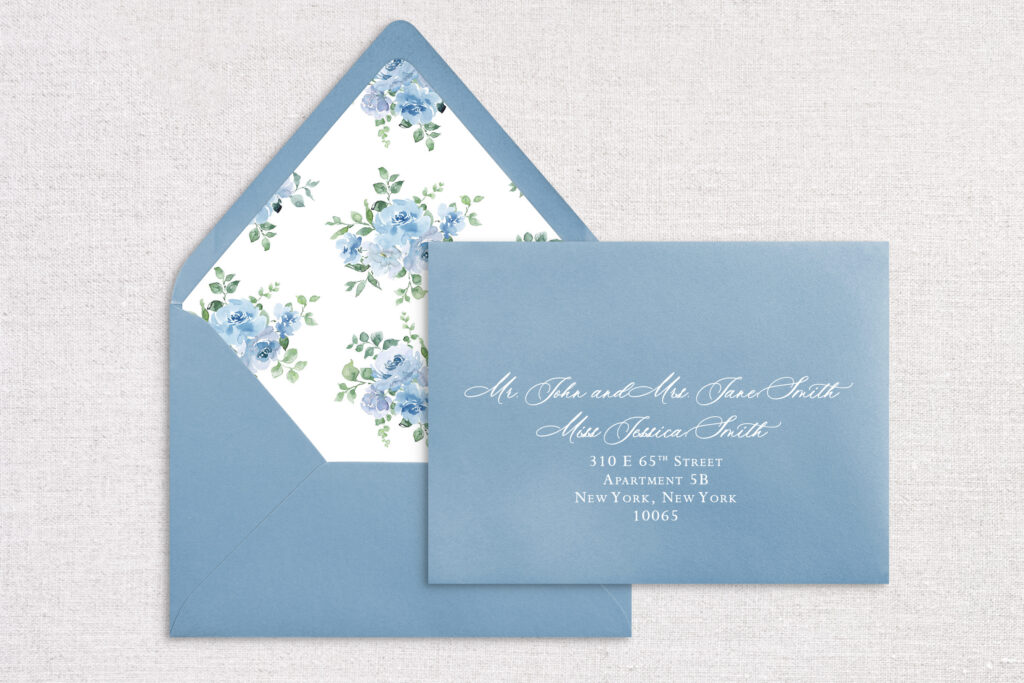
Divorced and Remarried Individuals
For divorced women who kept their married name, “Ms.” is traditionally used. If they have remarried, use their current spouse’s name:
- Ms. Jane Smith
- Mrs. Jane Johnson and Mr. Robert Johnson
Non-Binary or Genderqueer Individuals
For guests who identify as non-binary or genderqueer, use their name without a title, or ask them about their preferred honorific:
- Taylor Johnson
- Mx. Taylor Johnson
Widows
When addressing for a widow, address using her late husband’s name (e.g., Mrs. John Smith), but it’s becoming increasingly common to use the widow’s first name (Mrs. Jane Smith). When in doubt, it’s best to ask for her preference.
Remember these are just guidelines. Consider the preferences of your guests. When in doubt, don’t hesitate to ask! After all, the most important thing is that your invitations communicate respect and inclusivity, reflecting the spirit of love and celebration at the heart of your big day.
